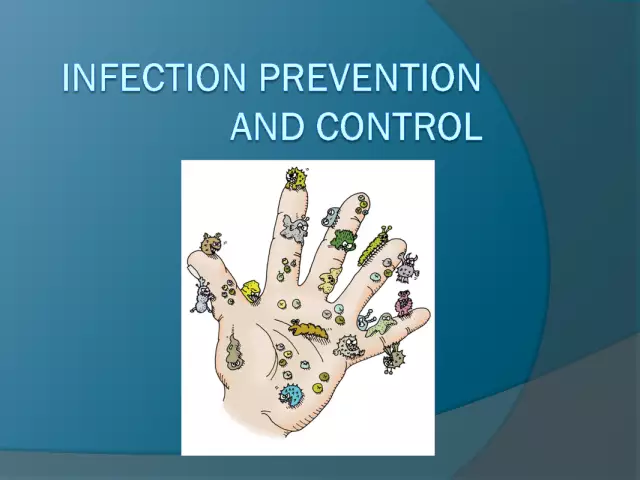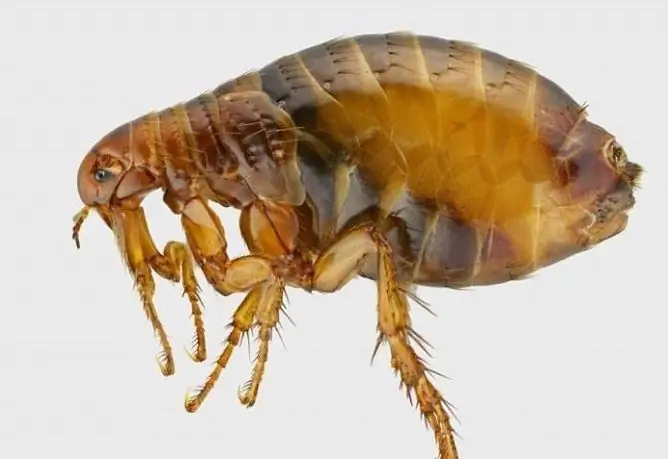- Author Rachel Wainwright [email protected].
- Public 2023-12-15 07:39.
- Last modified 2025-11-02 20:14.
10 sources of infection in your apartment
Very often, the source of the infection that caused the disease becomes our home - a place that must be a priori safe. However, pathogenic bacteria can feel great not only in unsanitary conditions, but also in an apartment, if the condition of the places most suitable for their habitation is not monitored. What are the sources of reproduction of microorganisms? Consider the 10 most dangerous places in our house in terms of contamination.
Cutting boards
A cutting board is an insidious source of infection, since microorganisms can easily get onto food from there. Sanitary inspectors have found that foods such as raw fish, meat, as well as potatoes, berries, leafy vegetables and herbs are the most dangerous in terms of infection; before cutting (slicing) it is recommended to rinse the product with hot water. The most favorable breeding ground for microbes is created on the surface of wooden cutting boards - especially those with cracks. To protect yourself and your family from the infection that these household items conceal in themselves, it is worth choosing a plastic or glass board instead of a wooden board, and after using it, wash it thoroughly with soap and water and pour boiling water over it.

Source: depositphotos.com
Kitchen sink
Scientists estimate that up to 80,000 different microorganisms live on every square centimeter of the kitchen sink, including the faucet. Their number in a damp and warm place, if you do not fight the problem, grows exponentially. No less dangerous are sponges and dishcloths that absorb moisture, dirt, food residues: it is impossible to rinse them out to a perfectly clean state. To protect your hands, dishes, towels from pathogenic bacteria, you must thoroughly clean the sink and the faucet with a disinfectant after each dishwashing, change the sponges as often as possible or treat them with boiling water.

Source: depositphotos.com
Toothbrush
A toothbrush is the most dangerous source of bacteria that are highly likely to end up in the human digestive tract. All 100 million microbes living on every square millimeter of the oral mucosa, getting into the brush, begin to actively reproduce. The situation is aggravated by pieces of food remaining on the bristles. Experts advise rinsing this hygiene item thoroughly with hot water after brushing your teeth and leaving it in a glass to dry. It is not recommended to hide the brush in a case, as excess moisture in this case activates the reproduction of microbes.

Source: depositphotos.com
Shower mesh
Every fourth shower mesh carries the bacteria Staphylococcus aureus, according to scientists at the American Center for Hygiene in Boston. Together with the stream of water, harmful microorganisms enter the human skin, and also spread throughout the bathroom, settling in the cracks between tiles, wet corners, and joints. You can prevent the growth of microorganisms by regularly treating the bathroom with disinfectants and ventilating it to avoid high humidity in the room.

Source: depositphotos.com
Footwear
In just a few minutes of walking on our shoes, over a hundred thousand different microorganisms settle - and not all of them are good for health. Together with wardrobe items, bacteria easily enter the apartment and find favorable breeding places for themselves. To keep the room safe, you need to wash the soles with hot water and soap immediately upon arrival home. It is recommended to keep the rug for drying your feet outside the corridor and, when changing into house slippers, leave your shoes outside the house.

Source: depositphotos.com
Toilet floor
Many will be surprised, but the floor in the toilet can be dirtier than the toilet, which is washed with water after each visit. Splashes falling on the floor carry with them the smallest particles of urine and feces, which serve as a favorable environment for the growth of microbes. Experts recommend closing the toilet lid when flushing, and also remember to clean the nearest surfaces with a disinfectant at least once every 3-4 days.

Source: depositphotos.com
Bed
Heat, moisture and human skin are the best breeding grounds for bacteria. All these conditions are present in the bed. In its cracks, domestic ticks, fleas, bedbugs, which serve as carriers of infection, can start. To avoid the appearance of pathogenic microbes and parasites in the bed, it is necessary, without laziness, to clean the mattresses and upholstery of sofas with a vacuum cleaner, as well as regularly change the bedding.

Source: depositphotos.com
Dust collectors
"Dust collectors" are places and objects where dust is usually trapped: soft toys, furniture, carpets, cushions, open shelves and cabinet surfaces, chandeliers, etc. This is not an active source of microbial growth (not enough moisture), but food for such dust may well become pathogenic bacteria. It is important to keep the apartment clean by wet cleaning, not forgetting about the treatment of hard-to-reach places. A more radical method of protection is to get rid of the "dust collectors" by minimizing decor items and furniture in the interior.

Source: depositphotos.com
Keyboard and computer mouse
A computer mouse, keyboard, phones - everything that we touch more than a hundred times a day can easily turn out to be a source of viruses, staphylococcus bacteria, intestinal infections. Scientists have deduced the following statistics: the keyboard becomes 10 g heavier for a year of use due to debris and food debris that gets inside it, which serves as a favorable environment for the reproduction of microbes. To reduce the likelihood of infection, regular wet cleaning, processing the computer screen, mouse, keyboard with special napkins, as well as personal discipline: do not eat while sitting in front of the monitor and touch the computer mouse with unwashed hands.

Source: depositphotos.com
Freshly washed linen
Washing with water at a temperature of less than 60 ° C is an ineffective hygiene measure that provokes further multiplication of microorganisms in wet clothes that have retained particles of human body secretions. A certain number of harmful bacteria are killed at temperatures above 65 ° C, and the largest - at 95 ° C. To get rid of the infection on clothes, it is recommended to wash them only at high temperatures, and if washing by hand is required, use bleach that kills up to 99% of all germs.

Source: depositphotos.com
YouTube video related to the article:

Maria Kulkes Medical journalist About the author
Education: First Moscow State Medical University named after I. M. Sechenov, specialty "General Medicine".
Found a mistake in the text? Select it and press Ctrl + Enter.






